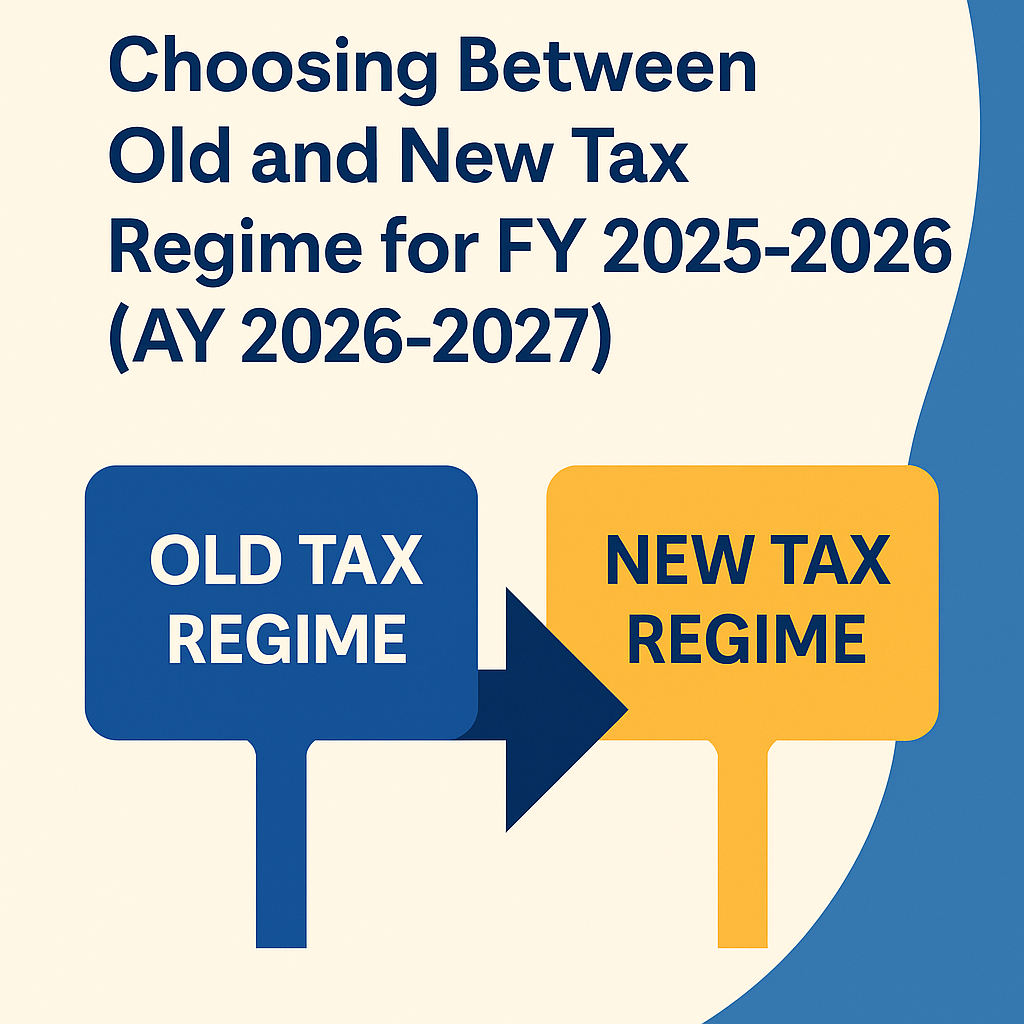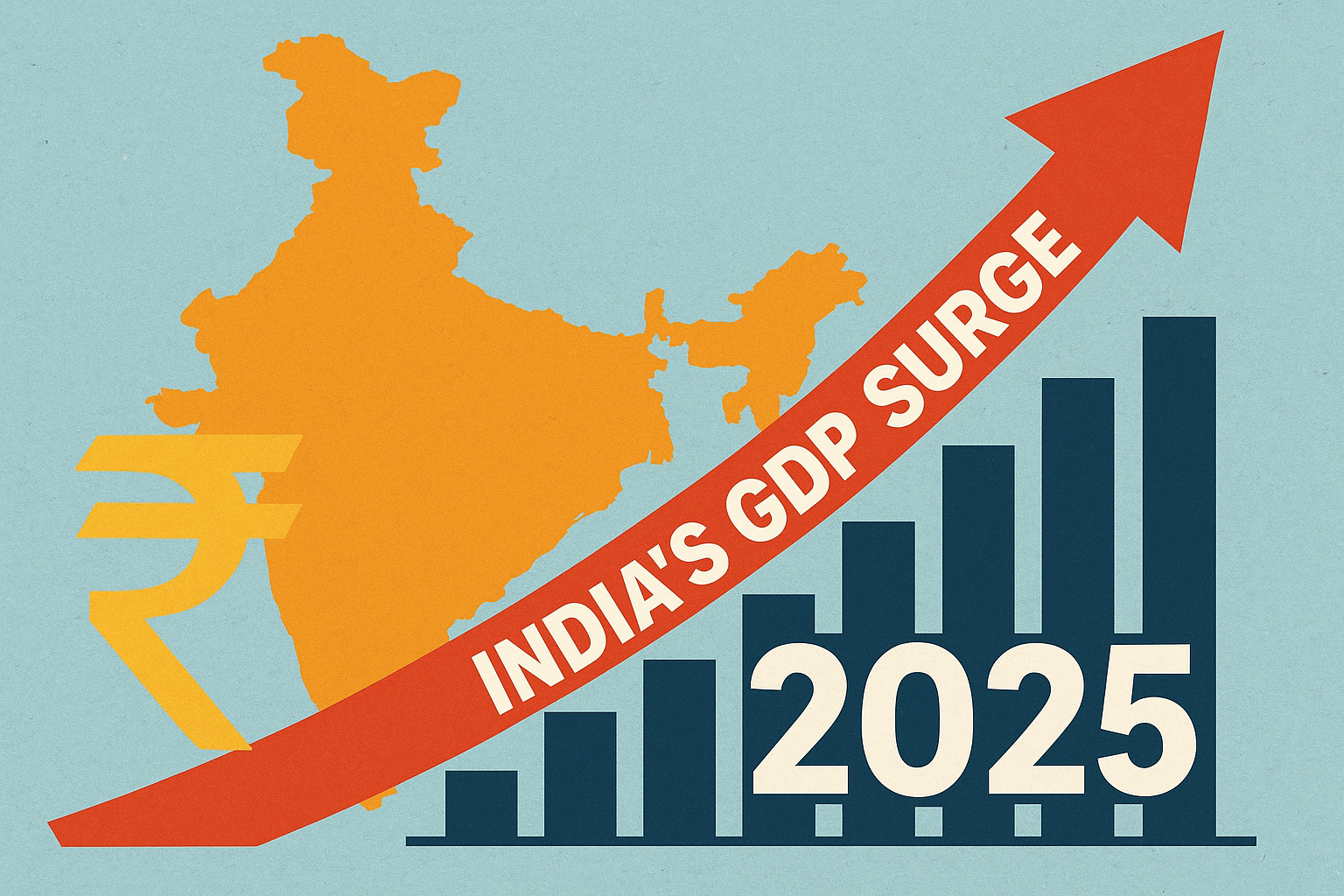Worried about paying too much tax this year? Find out which tax saving options in India can help, read our full guide!
Balancing household expenses while trying to grow your savings is becoming harder and harder each year. With incomes rising and spending patterns changing, many families find themselves paying more in taxes than they’d like. In 2025, this challenge is even greater, as the government expects to collect over ₹28 lakh crore in net tax receipts, a clear sign of the growing tax burden on individuals. That’s why smart planning and choosing the right tax saving options in India is no longer optional. The new tax regime, with its higher rebates and revised slabs, offers some relief, but it also calls for careful decisions on which regime and strategies work best for you.
Let’s learn more about it in detail in this blog and help you figure out the best way to save taxes this year.
Choosing Between Old and New Tax Regime for FY 2025-2026 (AY 2026-2027)

Deciding on the right tax regime for FY 2025-26 can significantly impact your overall savings. The updated New Tax Regime brings higher rebates but fewer deductions, while the Old Regime still lets you claim classic tax-saving benefits. Here’s a quick comparative overview to assist your decision-making:
| Feature | Old Tax Regime | New Tax Regime (FY 2025-26) |
| Basic Exemption Limit | ₹2.5 lakh | ₹4 lakh |
| Slab Rates | Up to ₹2.5 lakh: NIL ₹2.5 lakh – ₹5 lakh: 5% ₹5 lakh – ₹10 lakh: 20% Above ₹10 lakh: 30% | Up to ₹4 lakh: NIL ₹4 lakh – ₹8 lakh: 5% ₹8 lakh – ₹12 lakh: 10% ₹12 lakh – ₹16 lakh: 15% ₹16 lakh – ₹20 lakh: 20% ₹20 lakh – ₹24 lakh: 25% Above ₹24 lakh: 30% |
| Rebate u/s 87A | ₹12,500 (for income up to ₹5 lakh) | ₹60,000 (for income up to ₹12 lakh) |
| Standard Deduction | ₹50,000 (for salaried individuals/pensioners) | ₹75,000 (for salaried individuals/pensioners) |
| Section 80C Deduction | Up to ₹1.5 lakh (e.g., PPF, ELSS, LIC Premium, Home Loan Principal, Tuition Fees, NPS, Tax-saving FDs, Sukanya Samriddhi Yojana, NSC, Senior Citizen Savings Scheme) | Not allowed |
| 80D (Health Insurance) | Allowed | Not allowed (except for certain specific cases) |
| NPS Employer Contrib. (80CCD(2)) | Allowed (up to 10% of basic + DA; 14% for Central Govt. employees) | Allowed (up to 14% of basic + DA) |
| Surcharge (on tax amount) | 10% (income > ₹50 lakh – ₹1 Cr) 15% (₹1 Cr – ₹2 Cr) 25% (₹2 Cr – ₹5 Cr) 37% (above ₹5 Cr) | 10% (income > ₹50 lakh – ₹1 Cr) 15% (₹1 Cr – ₹2 Cr) 25% (above ₹2 Cr) |
Popular Tax-Saving Investments in 2025
To plan your finances better and in a tax-friendly manner, the most effective investment ideas to save taxes in 2025 have been listed below.
- Equity Linked Savings Schemes (ELSS)
ELSS mutual funds scheme enable you to claim a deduction of up to ₹1.5 lakh per year under Section 80C, but this benefit is accessible exclusively if you opt for the old tax regime. This
investment accompanies a 3-year lock-in period, which is the shortest among the various Section 80C tax-saving avenues. Gains realised after this lock-in period are subject to long-term capital gains (LTCG) taxation: the initial ₹1.25 lakh of gains is exempt, with amounts exceeding this threshold taxed at 12.5%. Under the new tax regime, ELSS investments do not provide any tax deduction, so their primary appeal is for old regime taxpayers seeking higher returns and willing to accept market risk. ELSS vs PPF remains a common debate, with ELSS offering higher but riskier returns.
- Public Provident Fund (PPF)
A long-term savings option backed by government support, the PPF comes with a 15-year lock-in period. PPF is a government-backed savings scheme with a 15-year lock-in. Under the old tax regime, annual investments of up to ₹1.5 lakh are deductible under Section 80C. All interest earned and the final maturity proceeds are entirely tax-free, establishing PPF as an Exempt-Exempt-Exempt (EEE) product. Conversely, if you select the new tax regime, PPF investments do not qualify for any deduction or exemption benefits.
- Tax-Savings Fixed Deposits
Five-year tax-saving fixed deposits (FDs) are a safe investment idea to save taxes in 2025 for conservative investors. Only FDs with a five-year lock-in are eligible for Section 80C deductions, up to ₹1.5 lakh, under the old regime. The interest rates range from 5.5% to 7.75% per annum, but the interest earned is taxable. In 2025, these fixed deposits investments do not offer any tax deduction under the new regime, making them suitable only for those who stick with the old regime.
- Unit Linked Insurance Plans (ULIPs)
ULIPs combine life insurance with investment and offer tax benefits under the old tax regime. Premiums paid (up to ₹1.5 lakh per year) are deductible under Section 80C. Returns from ULIPs can enjoy tax exemption under Section 10(10D), but only if the annual premium remains within 10% of the total sum assured. Under the new tax regime, however, premiums paid toward ULIPs do not fetch any deductions or exemptions, reducing their effectiveness as a tax-saving tool in this framework.
- National Pension Scheme
Backed by the government, the National Pension System (NPS) serves as a strategic retirement fund with unique tax-saving advantages woven into its structure. If you opt for the old tax regime, you can claim deductions of up to ₹1.5 lakh under Section 80C, supplemented by an additional ₹50,000 deduction under Section 80CCD(1B). However, under the new tax regime, only your employer’s contribution to NPS is eligible for a tax deduction, capped at 14% of your basic salary and dearness allowance. Upon the maturity of your NPS account, 60% of the accumulated corpus can be withdrawn tax-free, while the remaining 40% must be utilized to purchase an annuity, the income from which will be subject to taxation as per your applicable slab rate. However, the combined employer contributions to NPS, PF, and superannuation funds are tax-exempt only up to ₹7.5 lakh per year; any excess is taxable.
Other Major Deductions and Exemptions
Apart from the investments options discussed above, these are some more tax saving options in India that can further reduce your taxable income:
- Health insurance premiums: You can significantly lessen your tax burden by claiming deductions on health insurance premiums. For coverage protecting yourself, your spouse, and dependent children, a deduction of up to ₹25,000 is permissible. This limit escalates to ₹50,000 if either you or your parents qualify as senior citizens (aged 60 or older). Furthermore, expenses for preventive health check-ups allow an additional deduction of ₹5,000, which is included within this overarching limit. Crucially, this specific deduction is only available if you opt for the old tax regime.
- Home loan interest: For those with a self-occupied house, interest paid on a home loan qualifies for a deduction of up to ₹2 lakh each financial year. This tax relief is available exclusively under the old tax regime.
- Education loan interest: If you’re repaying an education loan, the entire interest component is deductible for a period of up to eight years, commencing from the year you start repayments. There’s no upper limit on the amount you can claim under this section. However, this deduction is only permissible if you choose the old tax regime.
- Charitable donations: Contributions made to officially approved charitable organizations or funds are eligible for deductions. The amount claimable is either 50% or 100% of the donated sum, depending on the specific institution recognized by the authorities. This benefit is extended solely if you select the old tax regime.
- Electric vehicle loan interest: To encourage the adoption of eco-friendly transportation, you can claim a deduction of up to ₹1.5 lakh per year on the interest paid towards a loan taken to purchase an electric vehicle. This deduction is an exclusive benefit under the old tax regime.
- Standard deduction for salaried individuals and pensioners: For the financial year 2025-26, salaried employees and pensioners can avail a standard deduction of ₹50,000 if they choose the old tax regime. If you pick the new tax regime, this standard deduction increases to ₹75,000. This benefit can be enjoyed under both tax regimes.
Conclusion
Using the right tax saving options in India can make a big difference to your finances in 2025. By matching investments and deductions to your goals and chosen tax regime, you can minimise your tax bill and boost your savings. Taking timely steps helps you benefit fully from these opportunities, so review these tax saving options in India now, and consider consulting a trusted trading expert for guidance on market-linked investments that can complement your tax strategy.
- Make in India 2.0: How Manufacturing Is Reshaping Market Sentiment - December 13, 2025
- Real Estate Boom : Why Tier-2 Cities Are Attracting Big Investors - December 12, 2025
- India’s GDP Surge 2025: What the New Growth Numbers Mean for Markets - December 9, 2025





